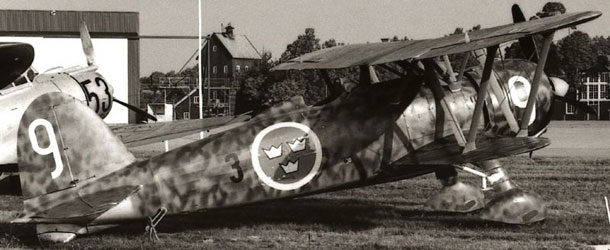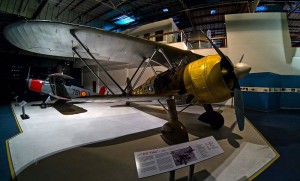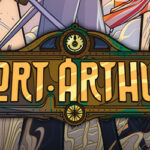The Fiat CR.42 Falco was the most famous WW2 Italian fighter, and the most widely used, with more than 1,780 aircrafts built. It was the last development of the Fiat biplane fighters produced by the engineer Celestino Rosatelli (CR was the acronym for “Caccia Rosatelli”), started with the CR.1 in 1923.
The CR.42 was highly maneuverable and sturdy, and even if it was outdated compared to other contemporary aircrafts, it played a crucial role as the primary fighter for the Italian air force in the early years of the war, and it was also used by Belgium, Finland, Germany, Hungary and Sweden.
In spite of the biplane configuration, the CR.42 was a modern, "sleek-looking" design. The rigidly braced wings of this single-seat sesquiplane, covered with fabric, were constructed from light duralumin alloy and steel. The aircraft proved exceptionally agile thanks to its very low wing loading. The CR.42 prototype first flight was in January 1939, and Regia Aeronautica, the Italian air force, instantly ordered it into production.
Powered with a Fiat A.74 RC38 radial air-cooled, fourteen cylinders radial engine, its maximum speed was 440 km/h at 20,000 ft - by 1942, Fiat had managed to raise the top speed to 518 km/h. It was armed with two fixed forward-firing Breda-SAFAT 12.7 mm machine guns, and in a variant adapted to ground attack, with up to 198 kg of bombs. Other variants of the base fighter included a multi-machine gun version (CR.42bis), the night fighter CR.42CN and the CR.42B Biposto, a two-seater trainer.
The first unit to be equipped with the CR.42 was the 53° Stormo, in May 1939. When Italy entered the war, in June 1940, there were about 300 CR.42s in service with four groups in the Mediterranean, and two squadrons in Italian East Africa.
The CR.42’s were used as day fighters and escort fighters in the Mediterranean theatre and as night fighters for home defense. They were deployed in almost all fronts of WW2, being particularly important in East and North Africa, where experienced Italian pilots, most of them veterans of the Spanish Civil War, employed the exceptional maneuverability of the CR.42 in successful attacks against RAF Gladiators, Hurricanes and Spitfires.
By 8 September 1943, when Italy surrendered to the Allies, only around 60 of the CR.42 were still in flying condition. The Luftwaffe took over the majority of Regia Aeronautica aircrafts, including a number of CR.42s, and one of the German units to use the CR.42 was Nachtschlachtgruppe (NSGr.). Based in Udine, the Nachtschlachtgruppe used the airplane to fight partisans in the region of the Alps, Istria and Croatia.
In the next article, you will learn something more about the pilots of the three Fiat CR.42 Falco presented in the WW2 Wings of Glory Airplane Packs.
Information sources: WW2 Aircraft, WWII Vehicles, Aeronautica Militare, Military Factory, Wikipedia.











Follow Us on